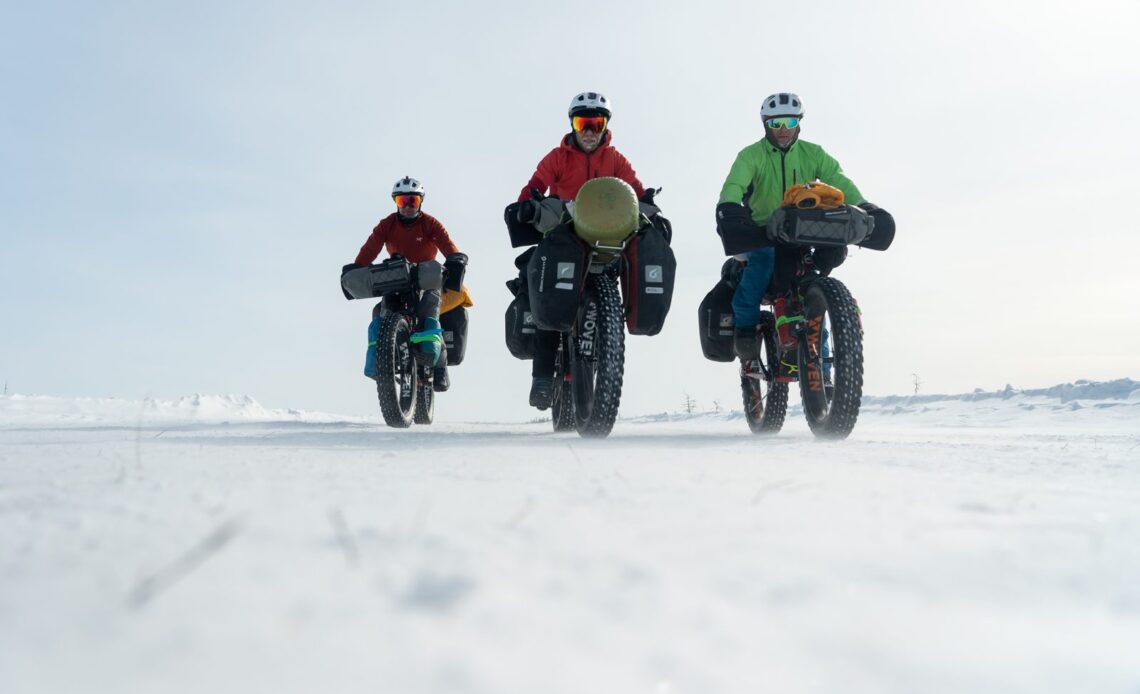Former pro cyclist Buck Miller loves the outdoors, no matter what the temperatures. He’s an avid fisher and camper, which explains why he lives in Huntsville, Ont., some 200 km north of Toronto. Lakes and forests aplenty, it’s located on the Canadian Shield, and for those who love to get outside and enjoy nature, it’s perfect.
Listen: They went on a subarctic fat bike trek, and then the whole world changed
Miller rides his gravel, road and MTB whenever he can–but he’s also a huge fan of fat biking, especially in the winter. He’s gone on some pretty incredible adventures as well. In 2019, he rode with Ted King, Eric Batty and Ryan Atkins went on a a 638-km fat-bike expedition from Attawapiskat First Nation to Moosonee along the bay’s coast, and then south to Smooth Rock Falls, Ont. In 2020, Batty, Miller and Atkins rode 752 km from Peawanuck, Ont., south of Hudson Bay all the way to Gillam, Man. He’s also organized the Muskoka Winter Fat Bike Race, a crit in the downtown area in February.
You may not be considering a trip to the Great White North for a freezing cold camping trip anytime soon (but if you are, enjoy!) but either way,
Riding in different kinds of snow and ice
If you’re riding in terrain that will switch between snow and ice, it’s important to think about your tires, Miller says. “If you’re new to fat biking, tire pressure is everything, and there’s no place where studs don’t belong. I’ve ridden for hundreds of kilometres on such low PSI where my sidewalks are wrinkled,” he explains. “If you’re riding in an area with high traffic and the surface is crusty on top but very firm below, you can pump up, and enjoy a bit more of a normal mountain biking experience. But for expedition travel or deep soft snow, we ride as low as possible.”
How to stay warm when it’s ridiculously cold
Since he’s ridden in quite literally Arctic-like conditions, he definitely knows a thing or two about staying warm.
“Don’t cheap out. Go buy the best winter riding equipment,” he advises. “Pogies for your hands make a huge difference; we even wrapped our grips in beaver fur. Get really good boots with room for a thick merino sock, and enough space where you can freely move your toes. The brands that make winter riding specific gear have tested their stuff in the far north with athletes and regular folks who commute.”
What about layering when you fat bike?
“Merino wool on the skin is my go-to. Top to bottom,…
Click Here to Read the Full Original Article at Canadian Cycling Magazine…

